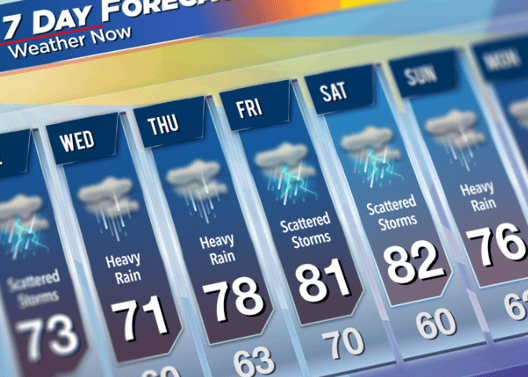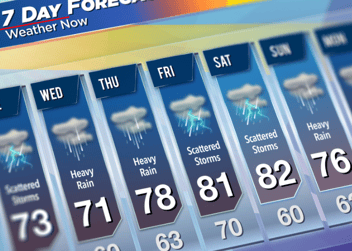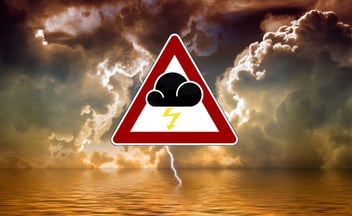
Ensure your wedding day goes off without a hitch by learning how to check past weather history on your chosen date.
Understanding the importance of checking past weather history
One of the most important aspects of planning a wedding is considering the weather conditions on your chosen date. Weather can greatly impact the success of your event, so it's crucial to have a good understanding of the past weather history. By checking the past weather patterns on your wedding date, you can get a sense of what to expect and make necessary adjustments to ensure your perfect day is indeed perfect.
Knowing the past weather history allows you to anticipate any potential challenges or opportunities that may arise. For example, if you notice that your wedding date has historically been rainy, you can plan ahead by having a backup indoor venue or providing umbrellas for your guests. On the other hand, if the past weather has been consistently sunny and pleasant, you can confidently proceed with your outdoor ceremony and reception.
By understanding the importance of checking past weather history, you can make informed decisions and take proactive measures to mitigate any weather-related risks on your wedding day.
Tools for searching past weather history
Fortunately, there are several tools available that can help you search for past weather history on your wedding date. One popular option is to use online weather archives or historical weather websites. These platforms provide historical weather data for specific locations and dates, allowing you to access information such as temperature, precipitation, wind speed, and more.
Another useful tool is EHAB's weather risk tool, which is specifically designed for event planning purposes. EHAB's platform offers accurate and hyper-local climate-adjusted datasets, ensuring that you have access to the most reliable weather data for your chosen location and date. This tool can greatly assist you in making informed decisions about your wedding day.
When searching for past weather history, it's important to choose a tool that provides comprehensive data and is easy to use. By utilizing these tools, you can gather the information you need to plan your wedding effectively.

EHAB's weather risk tool for accurate data
Within EHAB, you have the ability to set up specific weather conditions of your choice, and our advanced big data algorithm will accurately assess the likelihood of such weather occurrences. This valuable insight empowers you to make well-informed decisions for your special day.
Additionally, consider the peace of mind that parametric insurance can offer. This type of policy automatically provides a fixed sum payout if adverse weather conditions like heavy rain or high winds impact your wedding day. It's a proactive way to safeguard against unexpected weather-related challenges.
Want a free weather risk assessment for your special day? Get yours here to make sure you know the facts (Click here)
How to interpret past weather data for your wedding date
Once you have access to the past weather data for your wedding date, it's important to know how to interpret it effectively. Start by looking at the overall patterns and trends. Is the weather typically hot and humid, or does it tend to be cooler and breezier? Understanding the general climate of your chosen date can help you make decisions about attire, venue selection, and other logistical considerations.
Next, pay attention to specific weather elements such as temperature, precipitation, and wind speed. By analyzing this data, you can identify any potential weather risks or opportunities. For example, if the past weather history shows a high chance of rain, you can plan for indoor activities or have tents available for outdoor areas. Conversely, if the weather has historically been sunny and clear, you can confidently proceed with your outdoor plans.
Remember that while past weather data can provide valuable insights, it's not a guarantee of future weather conditions. Weather patterns can vary from year to year, so it's important to use the data as a guide rather than a definitive prediction. Consider consulting with a professional meteorologist or wedding planner to get expert advice on interpreting past weather data for your specific location.

Tips for using past weather history to plan your wedding day
Now that you have access to the past weather history for your wedding date, here are some tips on how to use this information to plan your special day:
- Have a backup plan: If the past weather data indicates a high chance of inclement weather, make sure you have a backup indoor venue or a plan for providing shelter to your guests.
- Consider the comfort of your guests: Take into account the temperature and weather conditions when planning your wedding attire. If the past weather has been consistently hot, consider lightweight fabrics and providing fans or shade for your guests.
- Use the data for logistical planning: Knowing the past weather patterns can help you make decisions about the timing of your ceremony, reception, and other activities. For example, if the past weather has been rainy in the afternoon, you may want to schedule your outdoor ceremony in the morning.
- Consult with professionals: Wedding planners and meteorologists can provide valuable insights and guidance based on the past weather data. Consider seeking their expertise to ensure that your wedding day goes smoothly.
By using the past weather history to inform your planning decisions, you can increase the chances of having a perfect wedding day. Remember to be flexible and prepared for any unexpected weather changes, but with the right information, you can minimize the impact of weather on your special day.



